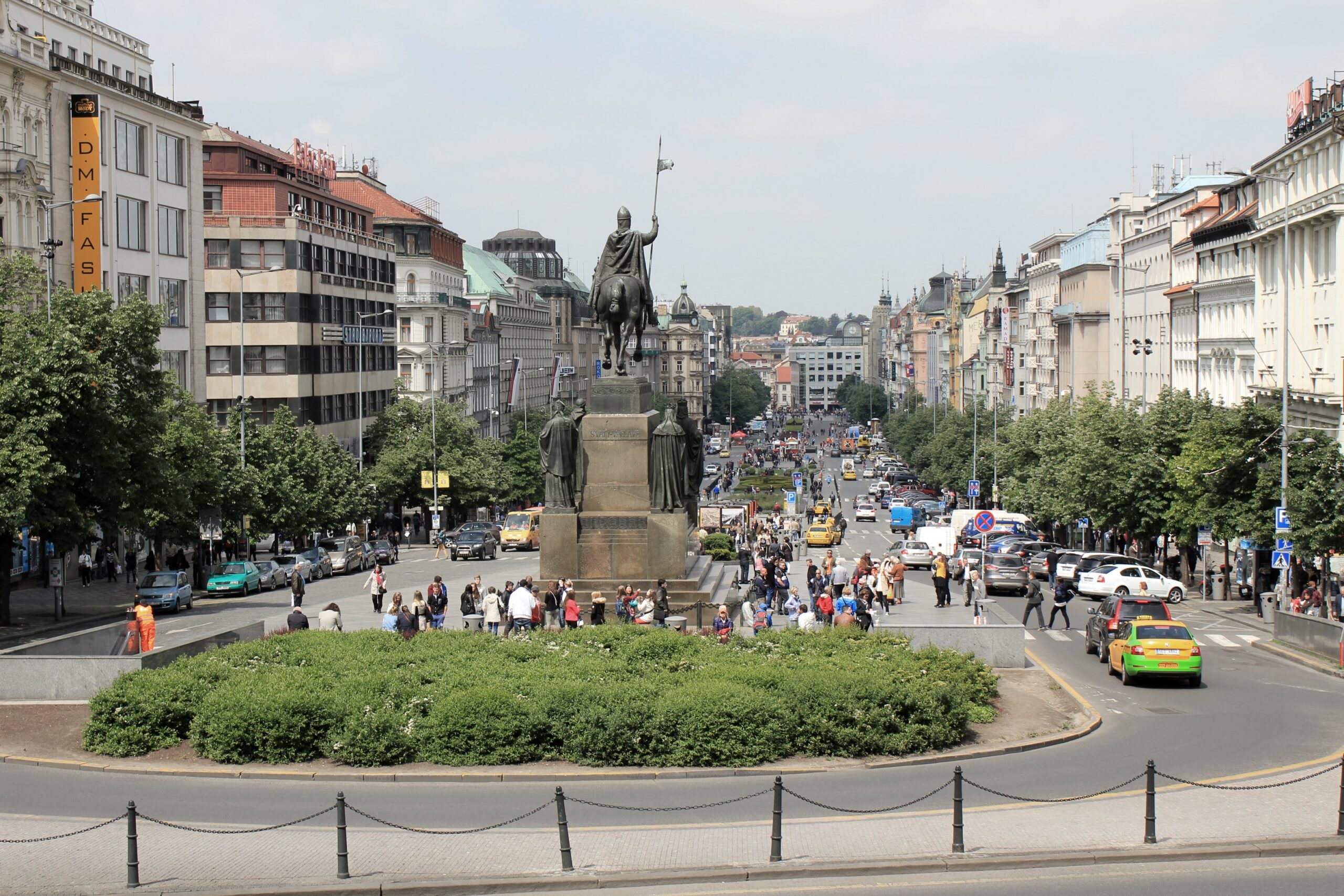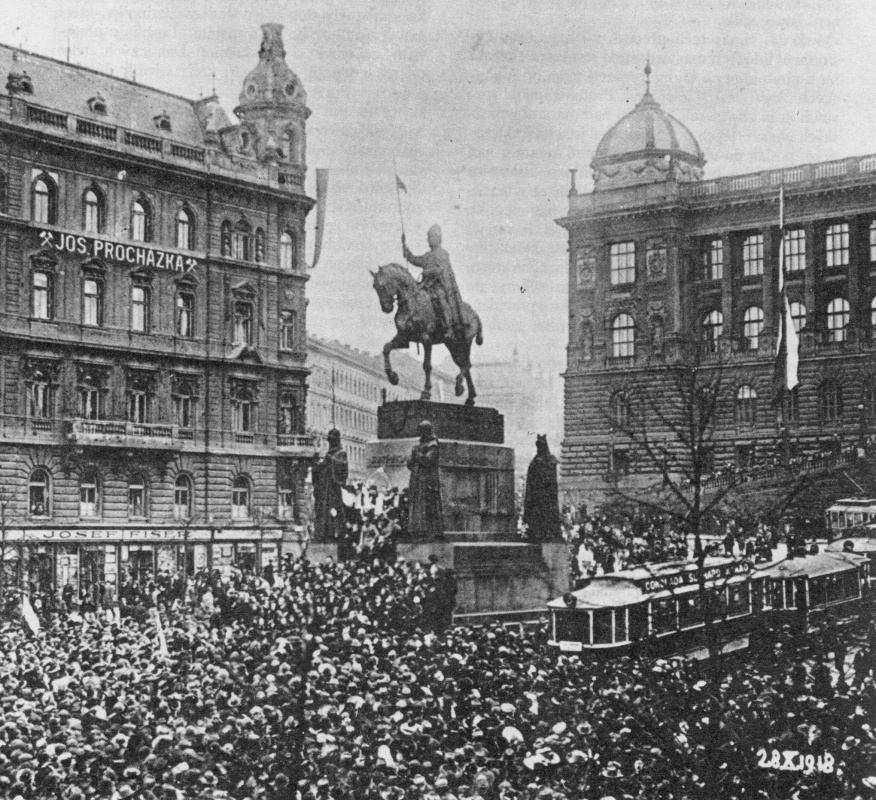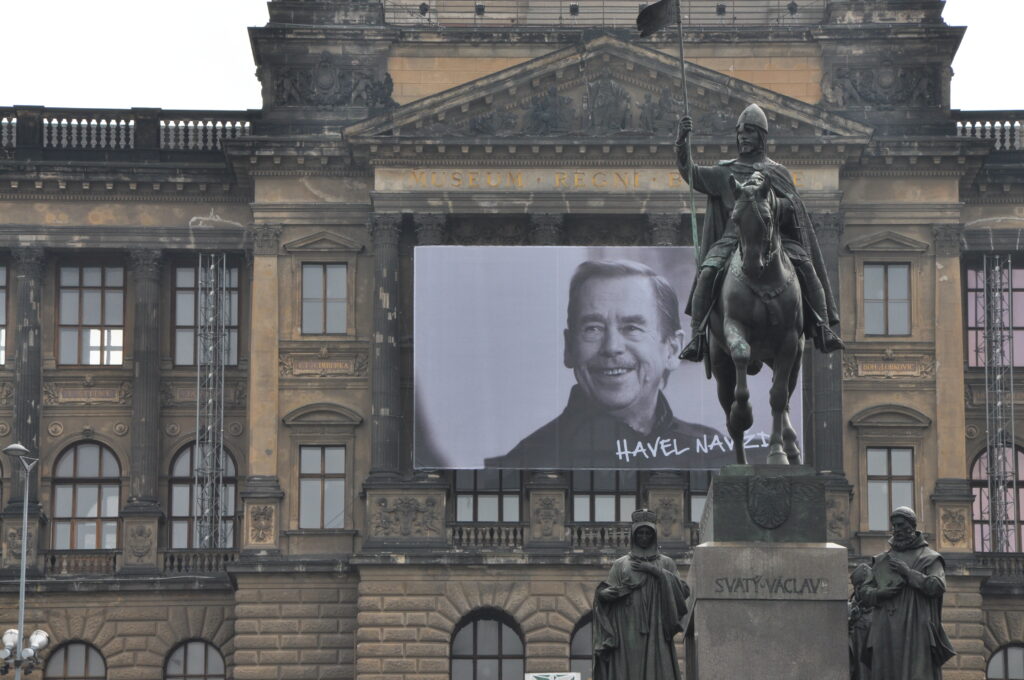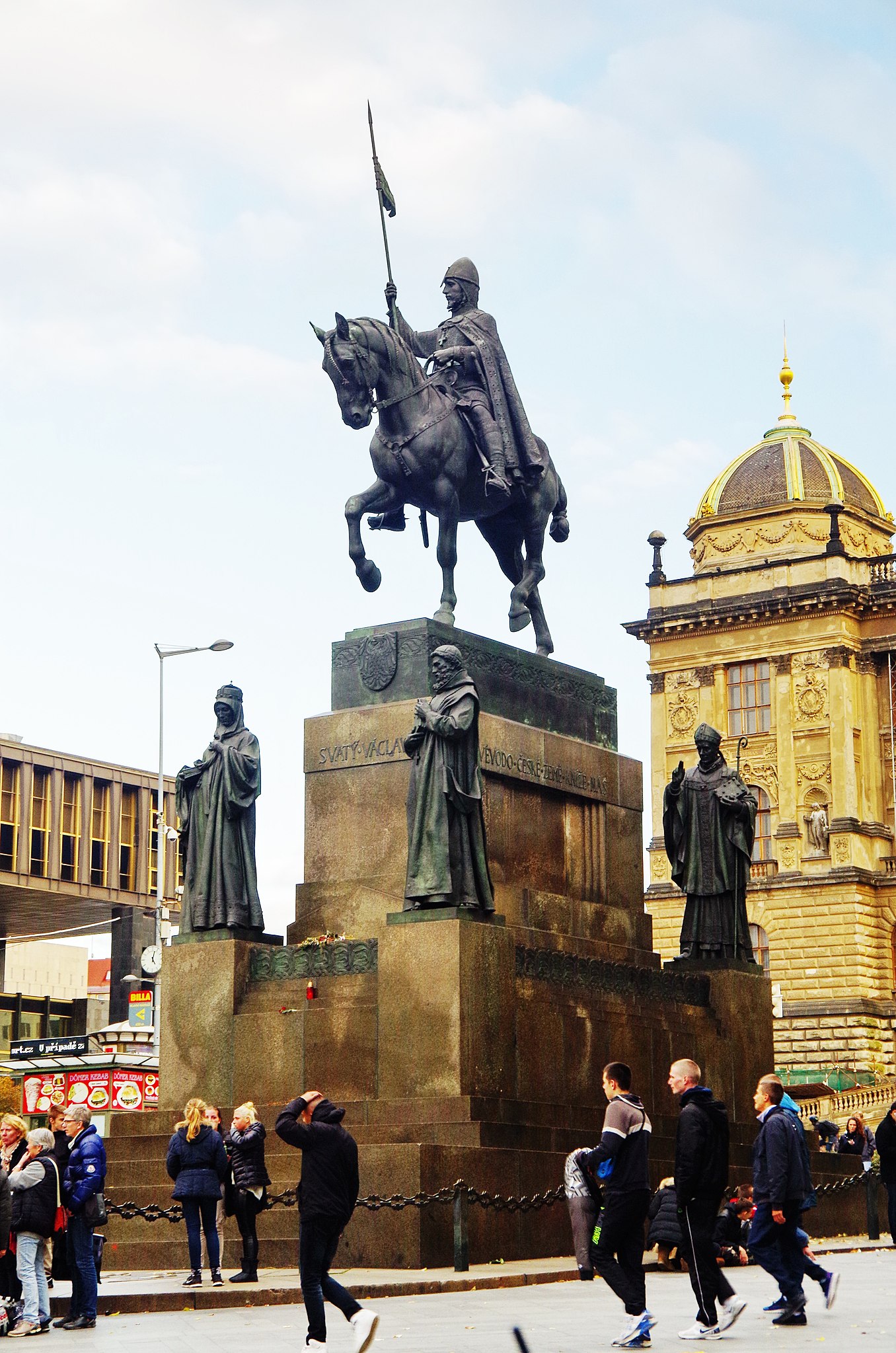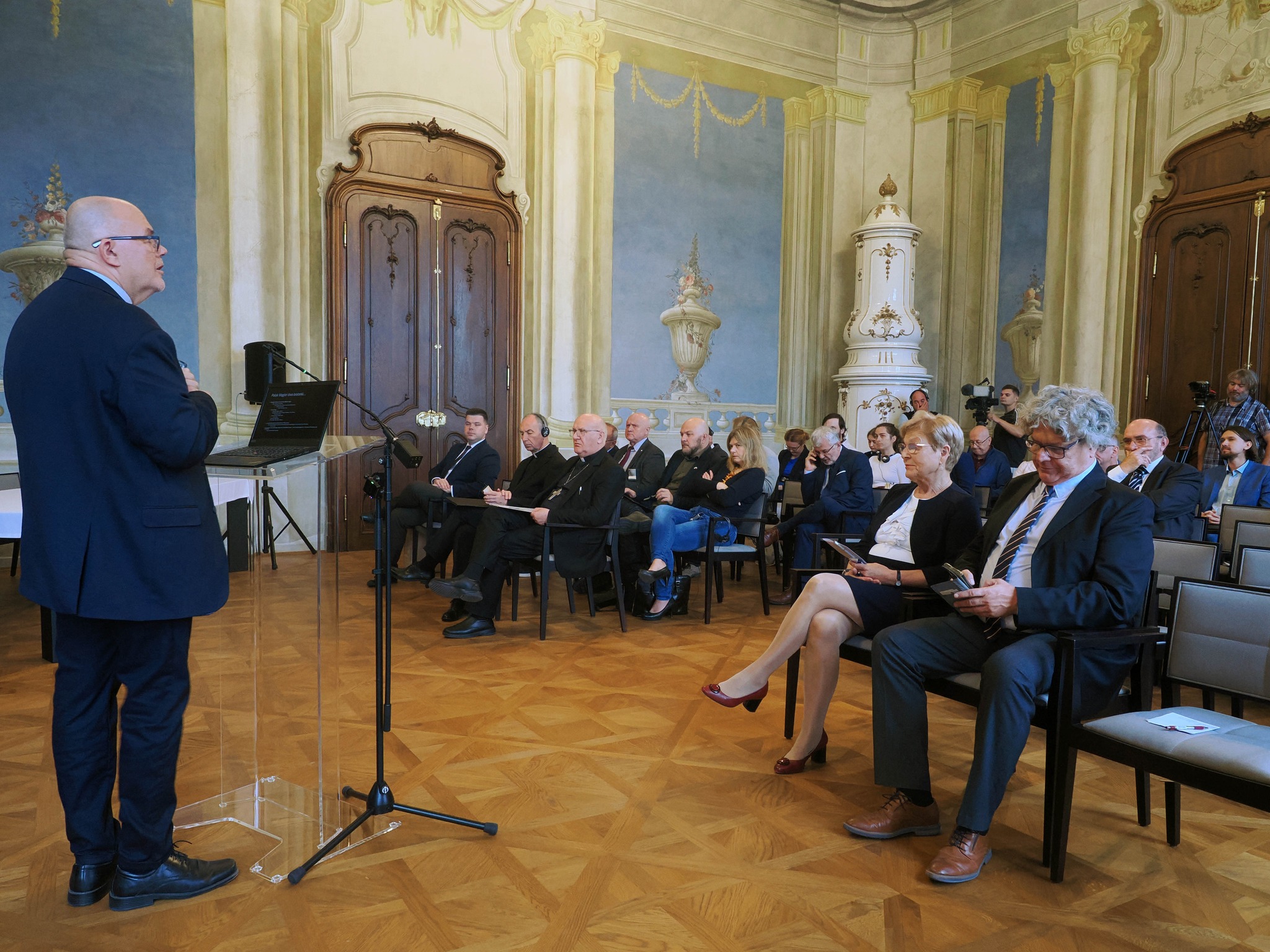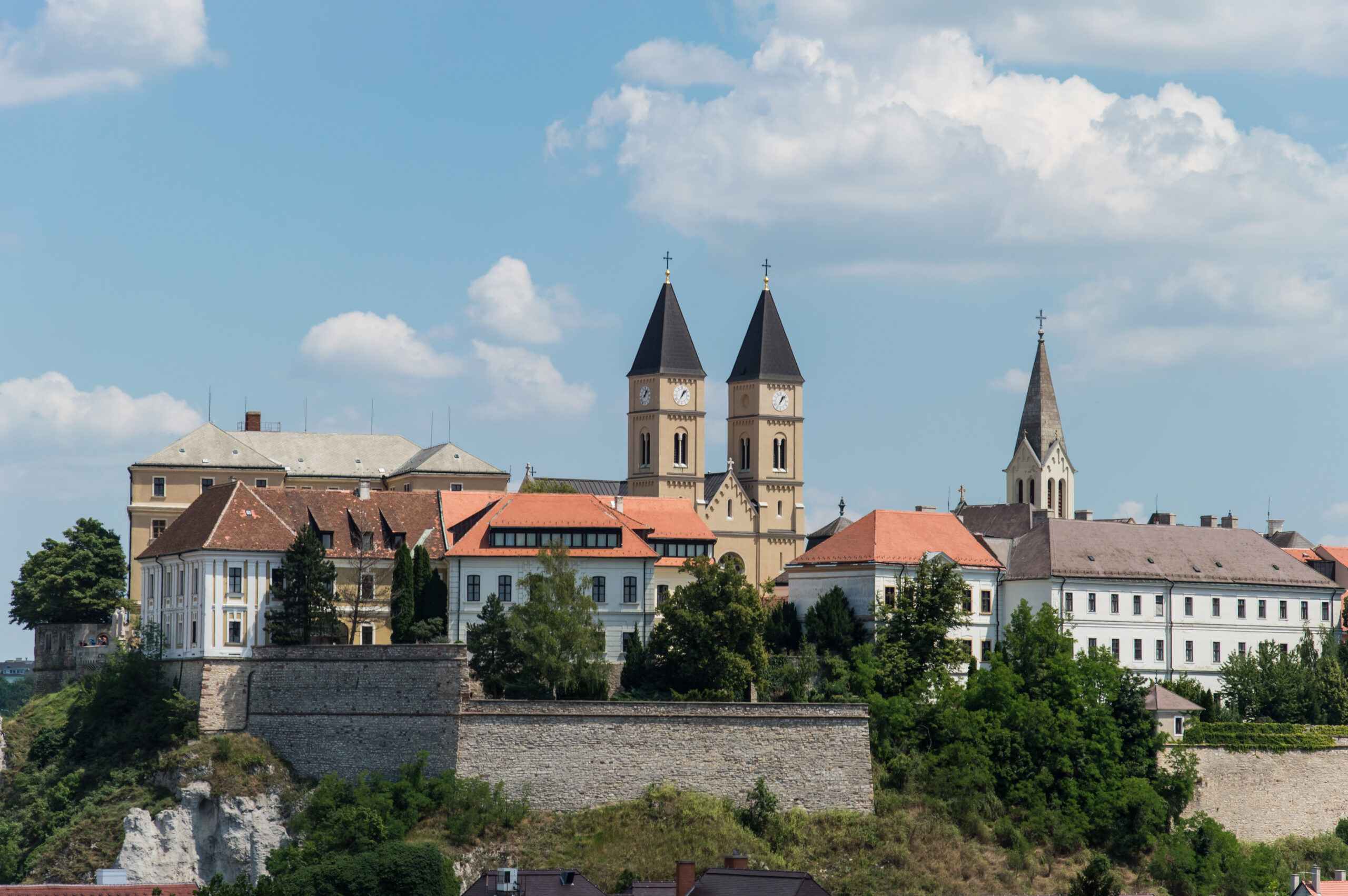Myslbek’s statue in Wenceslas Square – Prague, Wenceslas Square
Fact of the Czech figure „Patrons of the Czech Lands – Prague Castle – Cathedral”
Part of the „The patrons and guardians of the land” topic
At the upper end of Wenceslas Square in Prague soars the monument to Saint Wenceslas. The memorial unveiled in 1913 was crafted by the prominent Czech sculptor Josef Václav Myslbek, a representative of monumental realism. The statue is dominated by a bronze equestrian statue of Saint Wenceslas, whom Myslbek portrayed not as a traditional saint, but as a warrior duke with a helmet, clad in full armour and boasting a spear and banner. Statues of four other Czech patrons Saint Agnes of Bohemia, Saint Ludmila, Saint Procopius, and Saint Adalbert stand at the corners of the monument’s massive granite base.
The monument, crowning Wenceslas Square below the National Museum, has witnessed many pivotal events in Czech and Czechoslovak history throughout the 20th century. On October 28, 1918, Czechoslovakia’s independence was declared from the base of the monument. Later, it occurred to be the site of numerous celebrations, protests, and demonstrations, including the 1968 demonstrations against the Warsaw Pact invasion, the tragic self-immolation of Jan Palach in 1969, and the anti-communist demonstrations of the Velvet Revolution in 1989.
